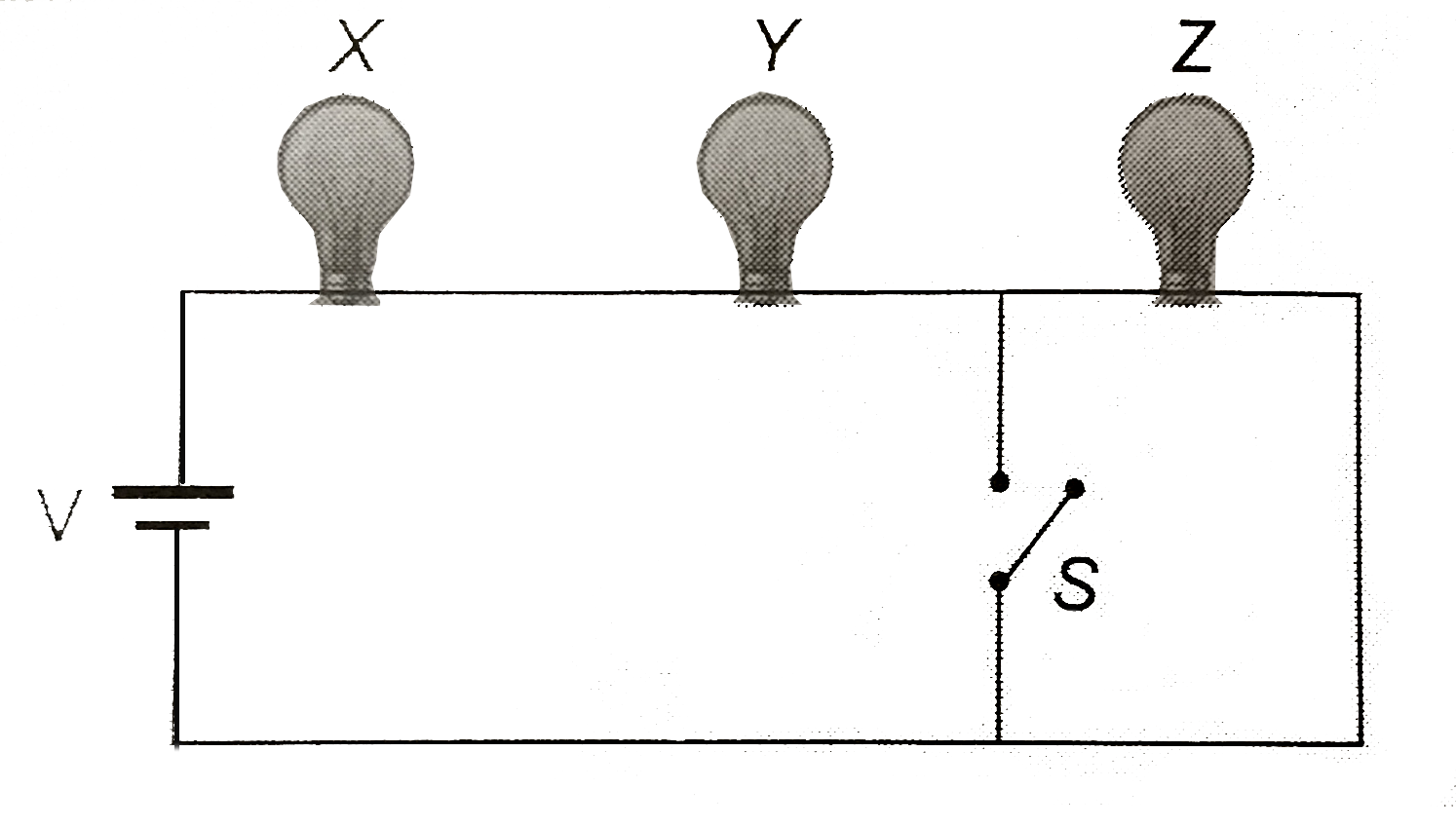Assertion: In series combination of electric bulbs th ebulb of lower power emits more light than that of higher power bulb.
Reason: The lower power bulb in series gets more current than the higher power bulb.
a) If both Assertion & Reason are True & the Reason is a correct explanantion of the Assertion
b) If both Assertion & Reason True but Reason is not a correct explanation of the Assertion
c) If Assertion is True but the Reason is False
d) If both Assertion & Reason are False.
To solve the given assertion and reason question, we will analyze both statements step by step.
Step 1: Understanding the Assertion
Assertion: In a series combination of electric bulbs, the bulb of lower power emits more light than that of the higher power bulb.
- In a series circuit, the same current flows through all components. The power (P) of a bulb is given by the formula:
P=V2R
where V is the voltage across the bulb and R is its resistance.
Step 2: Analyzing the Resistance
- The resistance of a bulb can be expressed in terms of its power:
R=V2P
- For two bulbs, one with lower power (P_L) and one with higher power (P_H):
RL=V2PLandRH=V2PH
- Since PL<PH, it follows that:
RL>RH
- This means the lower power bulb has a higher resistance.
Step 3: Light Emission
- The brightness of a bulb is related to the power it dissipates. In a series circuit, the bulb with higher resistance (lower power) will drop more voltage across it compared to the bulb with lower resistance (higher power).
- Thus, the assertion that the lower power bulb emits more light is correct because it has a higher resistance and, therefore, dissipates more power when the same current flows through it.
Step 4: Understanding the Reason
Reason: The lower power bulb in series gets more current than the higher power bulb.
- This statement is incorrect. In a series circuit, the current is the same through all components. Therefore, both bulbs receive the same current, not more current for the lower power bulb.
Step 5: Conclusion
- The assertion is true, but the reason is false. Therefore, the correct answer is that the assertion is true, but the reason is not a valid explanation for the assertion.
Final Answer
- Assertion: True
- Reason: False
Assertion: In a series combination of electric bulbs, the bulb of lower power emits more light than that of the higher power bulb.
P=V2R
where V is the voltage across the bulb and R is its resistance.
- The resistance of a bulb can be expressed in terms of its power:
R=V2P
- For two bulbs, one with lower power (P_L) and one with higher power (P_H):
RL=V2PLandRH=V2PH
- Since PL<PH, it follows that:
RL>RH
- This means the lower power bulb has a higher resistance.
- The brightness of a bulb is related to the power it dissipates. In a series circuit, the bulb with higher resistance (lower power) will drop more voltage across it compared to the bulb with lower resistance (higher power).
- Thus, the assertion that the lower power bulb emits more light is correct because it has a higher resistance and, therefore, dissipates more power when the same current flows through it.
Reason: The lower power bulb in series gets more current than the higher power bulb.
- The assertion is true, but the reason is false. Therefore, the correct answer is that the assertion is true, but the reason is not a valid explanation for the assertion.
- Assertion: True
- Reason: False
Similar Questions
Two bulbs, when connected in series, are brighter than a single bulb.
View SolutionAssertion: In parallel combination of electrical appliances, total power consum ption is equal to the sum of the powers of the indivisual appliances.
Reason : Electrons move away from a region of lower potential to a region of higher potential.
View SolutionThe power of a bulb is 60 W. What does this statement mean?
View SolutionThe tungsten filaments of two electric bulbs are of the same length. If one of them gives 25 W power and the other 60 W power, then
View SolutionWhen electric bulbs of same power, but different marked voltage are connected in series across the power line, their brightness will be :
View SolutionA series circuit consists of three bulbs connected to a battery as shown. When switch S is closed, what happens to (a) Power consumed in bulb X and Y (b) Power consumed in bulb Z (c ) the current in the circuit (d) the voltage drop across three bulbs and (e) the power consumed in circuit?

View SolutionAn electric bulb is connected to a 220V generator. The current is 0.50A. What is the power of the bulb ?
View SolutionAssertion: A gas with higher critical temperature gets adsorbed to more extent than a gas with lower critical temperature.
Reason: The easily liquefiable gases get adsorbed to more extent which have higher critical temperature.
View SolutionTwo elelctric bulbs P and Q have their resistance in the ratio of 1: 2. They are connected in series across a battery. Find the ratio of the power dissipation in these bulbs.
View SolutionAssertion: Through the same current flows through the line wires and the filament of the bulb but heat produced in the filament is much higher than that in line wires.
Reason: The filament of bulbs is made of a material of high resistance and high melting point.
View Solution
